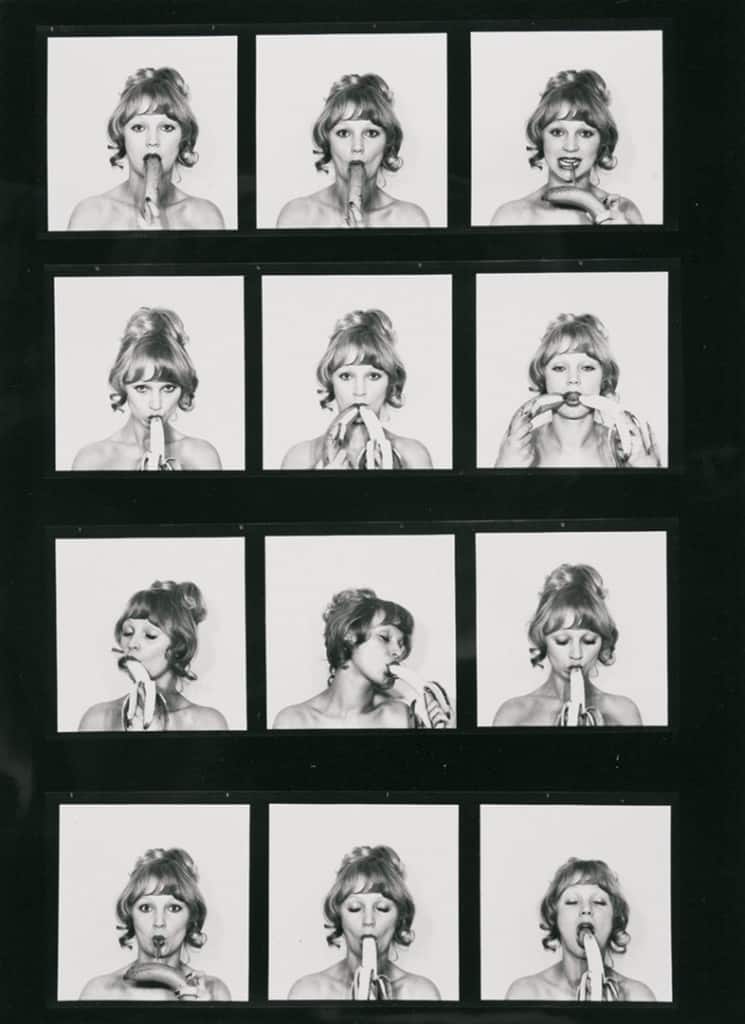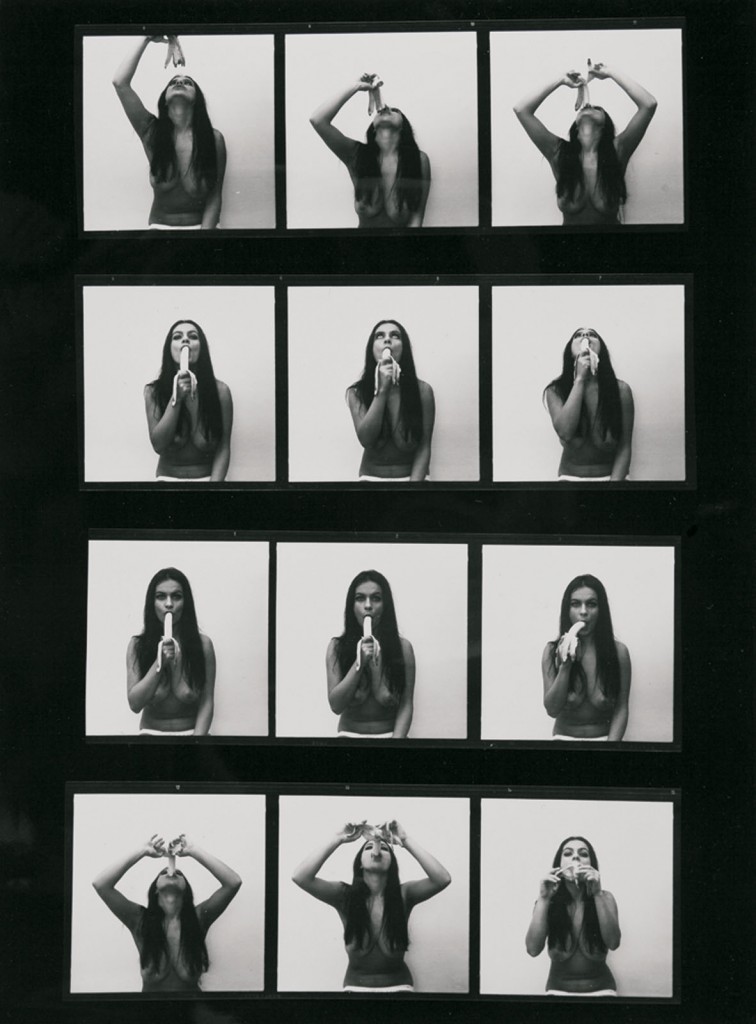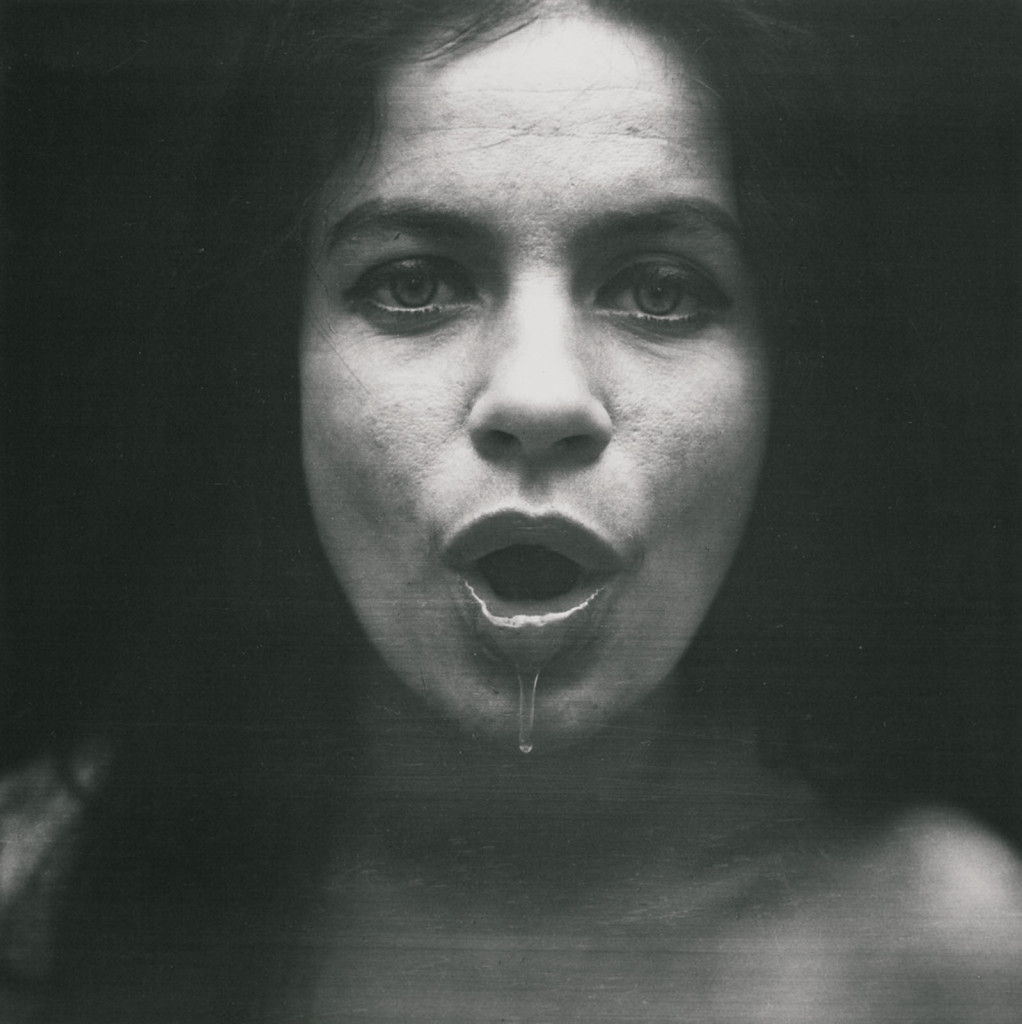Over the last months, we have been writing a lot about young artists, foreign exhibitions, art fairs, and collections. Unfortunately, there have been very few opportunities of presenting materials dedicated to the “classics”— artists already known and present on the international art scene for many years.

Natalia LL, Mirror, 1964, black and white photograph on photographic paper, courtesy the artist and lokal_30
So, let’s have a closer look at the work of Natalia Lach-Lachowicz, the extraordinary persona widely known as Natalia LL …. There are a couple of pretexts for dealing with this topic. First of all, her solo exhibition at the Upp Gallery in Venice has just ended. Secondly, during the Warsaw Gallery Weekend, that starts in just a few days, her major exhibition will open in the gallery lokal_30, featuring the artist’s never presented works that she created in the 60s., at the little known period preceding the Consumer Art cycles. The exhibition coincides with the efforts to release a new catalogue which attempts to “read” her output – especially that from the 1960s – anew. The third reason is more personal. Some time ago, on the occasion of the Krakow Photomonth Festival, I spoke with Walter Pfeiffer – a Swiss artist-photographer. Our talks focused on the Polish art scene. Pfeiffer stressed then how much he admires the work of Natalia LL, and how deeply it is ingrained in his memory. This conversation made me start thinking again about the phenomenon of Natalia’s art and its wide range of influence. How does she compare to what was happening in the West, but also what is the value of her deliberations on the body. Pfeiffer’s interest in Natalia seems natural: they have both reached for the medium of photography; they have both taken up the themes of body and sexuality. They attempt to capture the most intimate and private every-day activities. As a result, the viewer becomes a voyeur, and the photography – due to the polishing and arranging – seems something artificial. In Natalia’ s words, photography was a genuine meta-reality. Despite the similarities, however, on the basic-level approach to the chosen medium of art the two artists are diametrically different. Unlike Pfeiffer, Natalia LL wanted to reduce a decorative effect in photography or visual illusion to a minimum.

Natalia LL, Post-consumer Art, 1975, colour photograph on paper, 50.5 x 60.5 cm, the collection of the Museum of Contemporary Art in Krakow (MOCAK)

Natalia LL, Untitled from the series Consumer Art, 1974, black and white photograph on photographic paper, 30 x 21.8 cm, the collection of the Museum of Contemporary Art in Krakow (MOCAK)
When talking about Natalia LL, most people immediately think about the series of her photos depicting naked women in provocative poses, with various objects/food products. Photographs constitute Natalia’s most recognizable cycles: Consumer Art and Post-Consumer Art. Both series were created in the early 70’s, during the groundbreaking period of Natalia LL’s creativity shaping.
In her series Consumer Art, Phisiology Art and Post-Consumer Art Natalia, as one of the very few artists in the Polish People’s Republic, but also as one of the first artists in the whole world of the contemporary art history, chose the theme of physicality, sexuality and the role of women in our culture (or rather stereotypes about these topics). The images of women in daring poses, and even pornographic scenes consciously referred to the pictures from pornographic magazines, but also to the consumerism-related issues. A woman became reduced to a mere object, an element subjected to the consumption of the world that – at that time – was ruled and dominated by men. On the other hand, we are touching here upon the notion of people’s need, or rather desire to possess, which has become a fetish of our times, comparable to sex and erotica – yet when distorted – resembling pornography. In this way, Natalia LL’s work has become a part of the feminist art. The feminist movement was fighting and continue to fight against the stereotypical, masculinized image of the female’s role in the society. It was to make people conscious and thus release them – both women and men – from the rigid, well-defined roles and masks; it was to help in constituting one’s self. According to many female artists of the second half of the twentieth century, Art – an inner experience that should develop self-awareness – constituted a perfect means of expression within this feminist discourse. Natalia – actively involved in the debate on the condition of women and body – was one of them. She took part, among others, is the following exhibitions: Frauen Kunst – Neue Tendenzen in Innsbruck in 1975, Frauen machen Kunst in Bonn in 1976 and Wolfsburg, or in a self-organized Women’s Art exhibition in Wroclaw and Lausanne in 1978. In 1975, declared by the United Nations as the International Women’s Year, Natalia LL’s work from the Consumer Art series appeared on the cover of the issue of Kunst Heute magazine (No 9, 1975), devoted entirely to the art of women.

Natalia LL, Untitled from the series Consumer Art, 1972, black and white photograph on photographic paper, 22 x 22.2 cm, the collection of the Museum of Contemporary Art in Krakow (MOCAK)

Natalia LL, Untitled from the series Consumer Art, 1974, black and white photograph on photographic paper, 30 x 21.9 cm, the collection of the Museum of Contemporary Art in Krakow (MOCAK)
The way that the series of her photographs are presented is worth noting too. They are usually grouped and carefully arranged. One differs from the other only in details. In those years, Natalia LL began to work on a photographic reflection of an action, for which purpose she adopted a photo technique that she called ‘processual.’ Without selecting a single frame, she juxtaposed consecutive shots and recorded sequences of gestures and movements, giving them a definite and specific structure. The artist believed that “we can get closer to the knowledge of the present only when we will perceive more signals from reality. A condensation of the registrations is a warrant for reduction of deformations and mistakes resulting from a selection (…) The state of ideal registration results from receiving and recording all signals coming from reality.”[1] Hence, the system of cycles; the apparently random setting and multiplication of – at first glance – the same shots. Time after time, the reproduced heads of women, with banana or sausage in their hands or mouths filled with milk pudding, throw us a bold and challenging look. The multiplication of the head images additionally reinforces the tension between the viewer and the artwork. It is no accident that Natalia LL is reaching for the portrait photographs and the motif of the head so frequently. She finds it really important and believes that the head is “a creature with a cavity that absorbs externality, namely different solid and liquid foods, smells and sounds.”[2] Natalia says: “I envisaged the mystery of absorbing externality with such vividness that ever since 1972 all my art has been taken up with a conceptual play on consumption.”[3] But as it turns out, not only that. Natalia LL was closely connected with conceptual scene of Wroclaw. She found it impossible to separate the manual process from the thinking one, which she considered to be a complementing, fueling, explaining or even a preceding element. “I am fully and deeply convinced that the conceptual attitude is the greatest value that we have brought and still can bring to the art’s self-consciousness”, she wrote in her text The Theory of the Head in 1991.[4] “I must show how important in art is the human head. What is meant here is the substantive contents of the head (brain), which Joseph Kosuth has shown with great expressiveness. Art proposed by Kosuth is a great glorification of the mind.”[5] According to Lach-Lachowicz, art was inseparable from the human mentality. Therefore, next to her artwork, performances, and screenings, Natalia LL did actively participate in debates and wrote articles and manifestoes that dealt with issues such as art spaces and its duties, ways of art analysis, art research methods, and the relationships between art and reality. At first glance, many of her theories seemingly do not fit together, sometimes they contradict one another, but on a closer examination, one can notice that they co-influence and complete the artist’s work. In the late 80s and early 90s, Natalia returned to the motif of a head. During that period, she created such works and installations as: Vision Space, Panicky Sphere, Eschatological Landscapes, or a cycle entitled Destructs. Yet in this case, the images of a head were only a starting point for further action. Their overtones were very different from those in the 70s. They were no longer about femininity, sexuality, or nooks of intimacy. Natalia’s interest in reality transformed into metaphysical studies (transitional stage was marked by the screenings Dreaming, Pyramid, or Points of Support). The emphasis was placed here on the question of passing, aging, and death. The images no longer portrayed young beautiful women, but rather a face frozen in dramatic takes, with exaggerated facial expressions and widely open mouth like in a scream; a face wrapped in tight and thus, further deforming material. What was adding to the drama was that they were Natalia LL’s self-portraits, and the artist – as in a gesture of self-harm – painted and scribbled over them. Consequently, the pictures look as if cut, scratched and distorted. Natalia often printed these images on canvas or projected them on chairs enveloped in white sheets, or on specially built structures. The deformation of the artist’s image was even deeper then.
Despite these overtones of soulfulness and futility, body and physicality have remained the focal point in Natalia’s art. These cycles constituted simply a next stage of her research on the day-to-day, seemingly trivial matters. Since the very beginning of her artistic career, she has had a feeling that every moment is unique and hence worth recording – even if it means recording usual and trivial things. At first, she tried to capture eating, sleeping, sex, resting. Over time, she leaned towards the issues of aging, fading, and what remains after one is gone. This is directly linked to her understanding of body art, or the “way of living separate existence.”[6] Finally, let us give the floor to the artist who in 1980 wrote: “The body of art is a concrete dimension and materiality which is a derivative of the size and physiological conditions of the body which in turn is a case for the soul (…) The body is unique and each of its gesture, twitches, paroxysms, or spasms of pleasure is unique and inimitable. In a civilization of gadgets and mass production, the body is a stimulating garden of personalism. Thus Body Art is, in the first place, the joy of manifesting one’s own uniqueness.”[7]
translation: Urszula Płoch-Syhłowyj
1 Natalia LL. Sztuka i Energia / Art. And Energy, Muzeum Narodowe we Wrocławiu / National Museum in Wrocław, 8 XII 1993 – 27 I 1994, p. 10.
2 Natalia LL, Teoria głowy / The Theory of the Head [w:] Natalia LL. Teksty Natalii LL. Teksty o Natalii LL, Galeria Bielska BWA, 2004, pp. 121, 375.
3 Natalia LL, Teoria głowy / The Theory of the Head [w:] Natalia LL. Teksty Natalii LL. Teksty o Natalii LL, Galeria Bielska BWA, 2004, pp. 121, 375.
4 Natalia LL, Teoria głowy / The Theory of the Head [w:] Natalia LL. Teksty Natalii LL. Teksty o Natalii LL, Galeria Bielska BWA, 2004, pp. 121, 375.
5 Natalia LL, Teoria głowy / The Theory of the Head [w:] Natalia LL. Teksty Natalii LL. Teksty o Natalii LL, Galeria Bielska BWA, 2004, pp. 120, 374.
6 Natalia LL. Sztuka i Energia / Art. And Energy, Muzeum Narodowe we Wrocławiu / National Museum in Wrocław, 8 XII 1993 – 27 I 1994, p. 37.
7 Natalia LL, Słowo o ciele (Ciało o słowie)/A Word About the Body (The Body in a Word) [w:] Natalia LL. Teksty Natalii LL. Teksty o Natalii LL, Galeria Bielska BWA, 2004, pp. 83, 342.

Natalia LL, Untitled from the series Phisiology Art, 1974, black and white photograph on photographic paper, 30 x 22.1 cm, the collection of the Museum of Contemporary Art in Krakow (MOCAK) photograph on paper, 50.5 x 60.5 cm, the collection of the Museum of Contemporary Art in Krakow (MOCAK)

Natalia LL, Consumer Art, 1972, black and white photograph on photographic paper, 30 x 21.9 cm, the collection of the Museum of Contemporary Art in Krakow (MOCAK)






